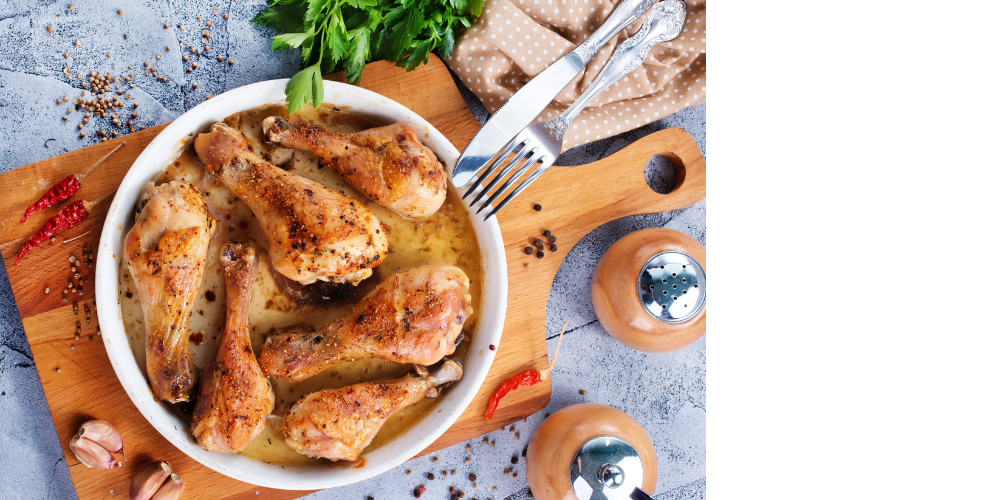Chicken and turkey are nutritious and affordable sources of animal proteins that can be enjoyed in a variety of ways.

Did you know…
- No artificial or added hormones are used in the production of chicken or turkey within the United States as it is forbidden by law by the U.S. Food & Drug Administration (FDA).
- Chicken sold in stores does not contain artificial or added hormones regardless of being labeled as “raised without hormones” or “no hormones added.”
- Chicken and turkey are versatile sources of protein that can be part of a healthy diet.
Health Benefits of Chicken and Turkey
- Chicken and turkey are great sources of protein. A 3-ounce serving of cooked boneless, skinless chicken or turkey breast has around 25 grams of protein.
- Chicken and turkey both provide iron, zinc, phosphorus, and B vitamins.
White vs. Dark Meat
Dark chicken and turkey meat contain higher amounts of myoglobin, an iron containing protein, than white meat.
- Myoglobin provides oxygen to muscles during movement.
- Chickens and turkeys rely on their leg and thigh muscles for movement so those muscles contain higher amounts of myoglobin creating dark meat. Because of this, dark meat contains more iron than white meat.
White and dark meat vary in the amount of calories, saturated fat and fat.
- A 3-ounce serving of skinless dark meat contains around three times the amount of fat than the same serving size of skinless white meat, though both are considered lean sources of animal protein.
Healthy Cooking with Chicken and Turkey
Chicken and turkey can be incorporated into a variety of recipes and cooked in many different ways to optimize flavor.
- Never rinse your poultry before preparing. According to the USDA, rinsing or washing poultry increases the risk for cross-contamination in the kitchen, which can cause foodborne illness.
- For safety, the USDA recommends cooking all chicken and turkey products to 165 °F as measured with a food thermometer.
- Choosing skinless chicken and turkey pieces will reduce the amount of saturated fat consumed from the poultry.
- Brining lean meats and poultry, like chicken or turkey breasts, can maximize their juiciness. Brining is the process of soaking the poultry in a solution of salt water for a specified amount of time prior to cooking.
- When brining, ensure the poultry you purchase is not already brined or salted during processing.
- Brining formula for boneless, skinless chicken breasts (up to 6 breasts):1 ½ quarts water + 3 tablespoons table salt, soak chicken for ½ to 1 hours in refrigerator.
- Brining this way adds approximately 270 mg of sodium per 6 ounces of cooked chicken breast.


